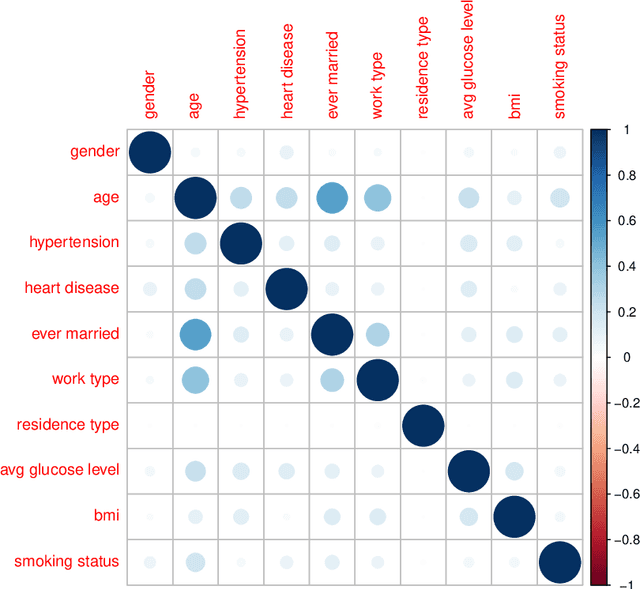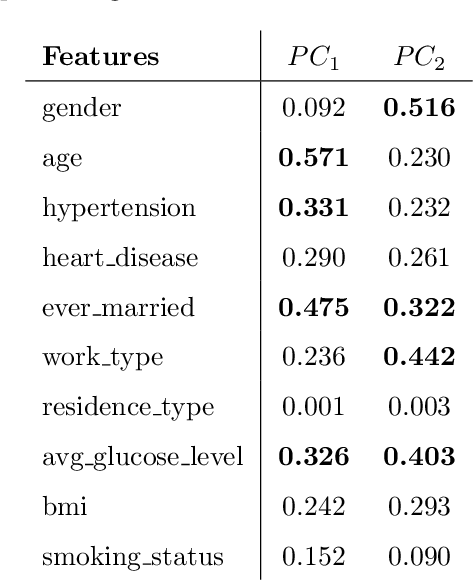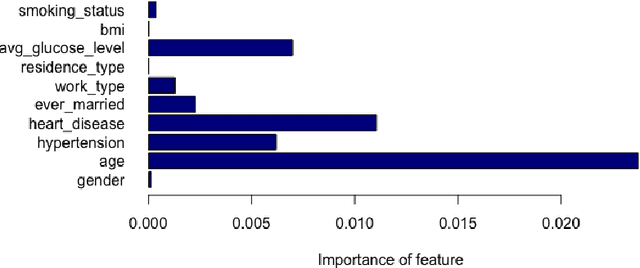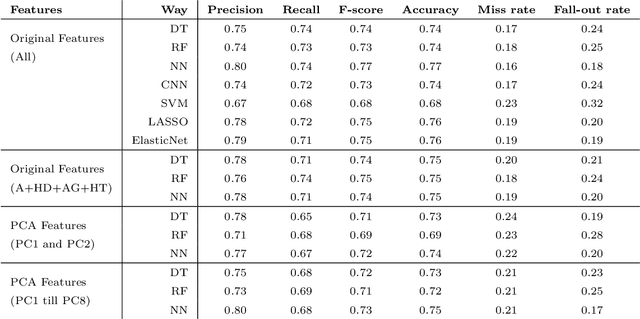Chidozie Shamrock Nwosu
A predictive analytics approach for stroke prediction using machine learning and neural networks
Mar 01, 2022



Abstract:The negative impact of stroke in society has led to concerted efforts to improve the management and diagnosis of stroke. With an increased synergy between technology and medical diagnosis, caregivers create opportunities for better patient management by systematically mining and archiving the patients' medical records. Therefore, it is vital to study the interdependency of these risk factors in patients' health records and understand their relative contribution to stroke prediction. This paper systematically analyzes the various factors in electronic health records for effective stroke prediction. Using various statistical techniques and principal component analysis, we identify the most important factors for stroke prediction. We conclude that age, heart disease, average glucose level, and hypertension are the most important factors for detecting stroke in patients. Furthermore, a perceptron neural network using these four attributes provides the highest accuracy rate and lowest miss rate compared to using all available input features and other benchmarking algorithms. As the dataset is highly imbalanced concerning the occurrence of stroke, we report our results on a balanced dataset created via sub-sampling techniques.
 Add to Chrome
Add to Chrome Add to Firefox
Add to Firefox Add to Edge
Add to Edge